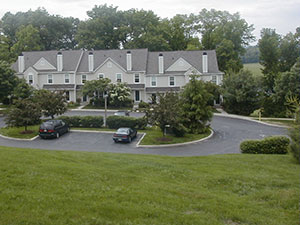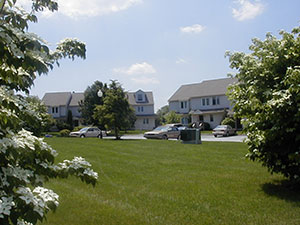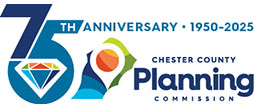Design Elements — Parking Lots for Multi-Family Buildings, Visitors and Overflow
Whether for residents of the development or their visitors, many conservation subdivisions require additional parking capacity outside of private driveways and garages. However, these additional parking areas need not be impervious depending on how frequently/intensively they will be used. Allowing for porous pavement or paver blocks in the ordinance can reduce the total impervious surface on the site. Porous pavement is a permeable surface paving material comprised of bituminous concrete mixtures that permit stormwater to infiltrate through tiny spaces. On the surface it looks the same as standard paving material. For a "softer" option, reinforced turf can be used in overflow parking areas that will not be heavily used. This can consist of concrete pavers or a plastic grid material that stabilizes soil and can allow grass to grow through, permitting some stormwater infiltration.
Ordinance Considerations
The use of porous asphalt should be approved on a case-by-case basis. It requires varying degrees of maintenance with specialized equipment to prevent clogging. It is not appropriate in areas with high seasonal high water tables, where it will be subject to high traffic or heavy vehicles, or where deicers will be used near a water body.
Good Examples

This parking area in Marsh Harbor provides overflow parking, green infrastructure, and a reduction in impervious coverage.

The central green provides an area for relaxation or recreation and landscaped overflow parking.

Overflow parking spaces are located just a short walk away from townhouses for residents and visitors to Sagamore.

